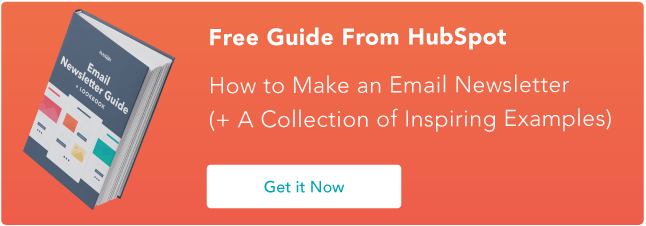- Like
- SHARE
- Digg
- Del
- Tumblr
- VKontakte
- Flattr
- Buffer
- Love This
- Save
- Odnoklassniki
- Meneame
- Blogger
- Amazon
- Yahoo Mail
- Gmail
- AOL
- Newsvine
- HackerNews
- Evernote
- MySpace
- Mail.ru
- Viadeo
- Line
- Comments
- Yummly
- SMS
- Viber
- Telegram
- JOIN
- Skype
- Facebook Messenger
- Kakao
- LiveJournal
- Yammer
- Edgar
- Fintel
- Mix
- Instapaper
- Copy Link
Email marketing is a key component of any successful marketing strategy — in fact, email marketing provides companies with a potential ROI of $44 for every $1 spent.
In particular, email newsletters are an essential way for your business to keep your subscribers up-to-date with relevant information, and ultimately drive more leads. Newsletters give marketers the ability to capture email sign-ups through form submissions, and nurture leads.
If you have a blog, you’ve probably sent newsletters to notify subscribers about new blog posts. Alternatively, perhaps you’ve used newsletters to send business-related information to your subscribers.
Anyway you slice it, newsletters help you keep your contacts engaged with your business.
An email newsletter tool is essential, since it allows you to beautifully design a newsletter email, deliver the email to your subscribers with features such as A/B testing and smart content, and monitor and analyze how the newsletter performed.
However, not all email newsletter tools are created equal. With differences in features, pricing, and availability, choosing an email newsletter can be hard — especially with the number of options available. Additionally, newsletter tools differ in how much of the customer journey they can cover.
Ultimately, when choosing your email newsletter tool, you’ll want to ensure the tool matches your business’s goals — which is why we wanted to take out the guesswork, and highlight the top email newsletters out there for your business.
Best Newsletter Software
1. HubSpot’s Email Newsletter Tool
Designing, sending, and analyzing email newsletters has never been easier with the HubSpot Email tool. HubSpot offers a drag-and-drop email editor so you can easily create a polished email newsletter that you can personalize to fit your brand’s design without needing a designer or IT professional.
Additionally, you can experiment with smart content rules, personalization, A/B testing, and advanced reporting — ensuring your email newsletters are optimized for your business. You can also see who’s engaging with each newsletter email and when, what device they’re using, the most popular links and documents, and more. You can use these insights to design tests that will take conversion rates to new heights for your business.
Ultimately, what makes HubSpot’s Email tool so exceptional is its ability to pair with HubSpot’s free forms tool to easily collect email leads, as well as HubSpot’s free CRM to give you insight into how your marketing emails are performing.
For example, you can use an email subscriber’s lifecycle stage, list membership, or any information in their contact records to automatically serve up the most relevant subject lines, content, links, attachments, and calls-to-action.
HubSpot’s email tool starts free.
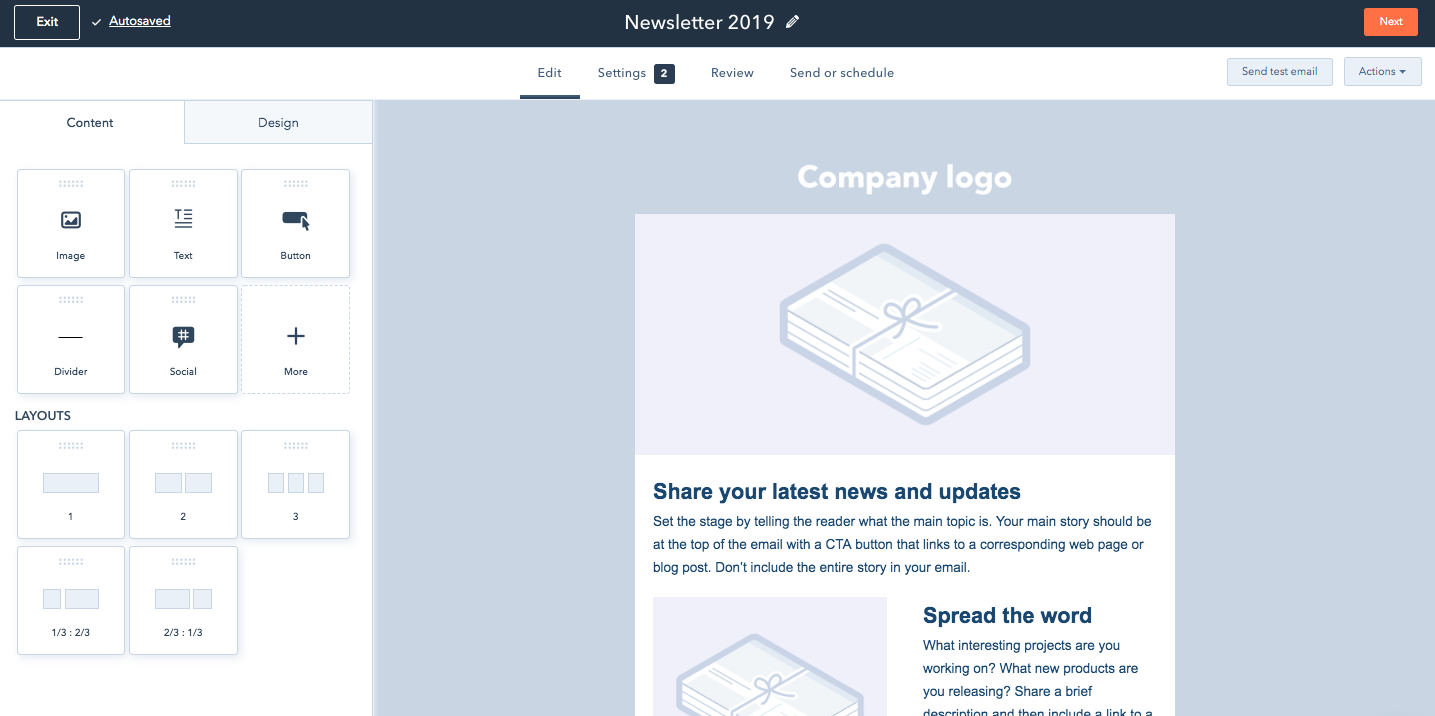
2. Benchmark
Benchmark offers the ability to easily create email newsletters via drag-and-drop functionality, giving non-technical marketers the power to create beautiful newsletters. There’s also a good selection of newsletter templates that you can choose from in the Benchmark template library.
Some of Benchmark’s most valuable features include detailed analytics on how each email campaign performs, A/B split testing to ensure you’re sending the best emails, spam testing tools that ensure your emails get to inboxes, responsive designs and templates, list segmentation tools, and auto-responders.
Benchmark is free for up to 2,000 subscribers, and lets you send up to 14,000 emails per month.
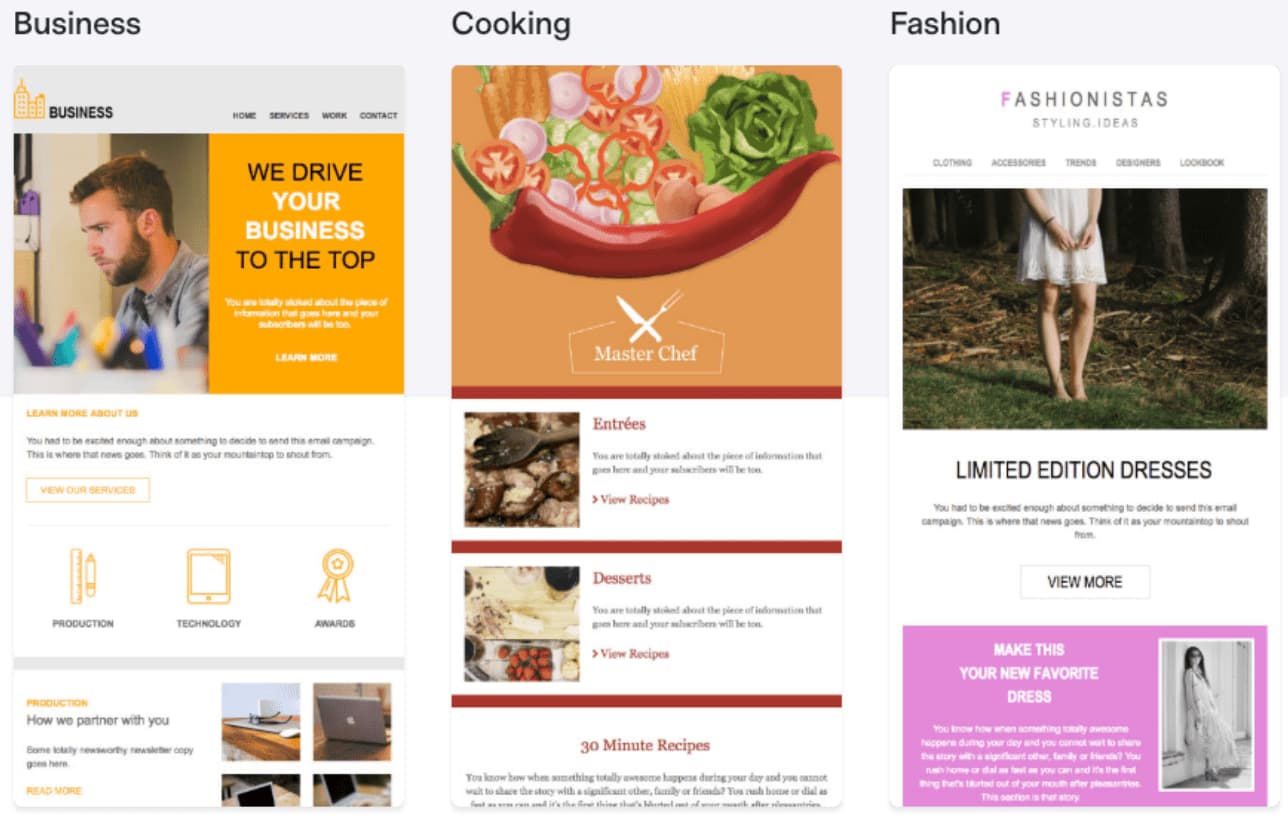
3. GetResponse
GetResponse offers features that become available as you need them, from a range of starter features all the way to enterprise features such as webinars and landing pages. Hosting landing pages in GetResponse will further enable you to capture email subscribers for your newsletter.
GetResponse also allows you to create well-designed email newsletters with their drag-and-drop email editor, segment contacts tool, campaigns creator, and A/B testing tool. With a ton of templates to choose from, you can create an email to match your brand, and send emails more efficiently.
GetResponse does not offer a free tier, but they have a 30-day trial, and pricing starts at $15 per month.
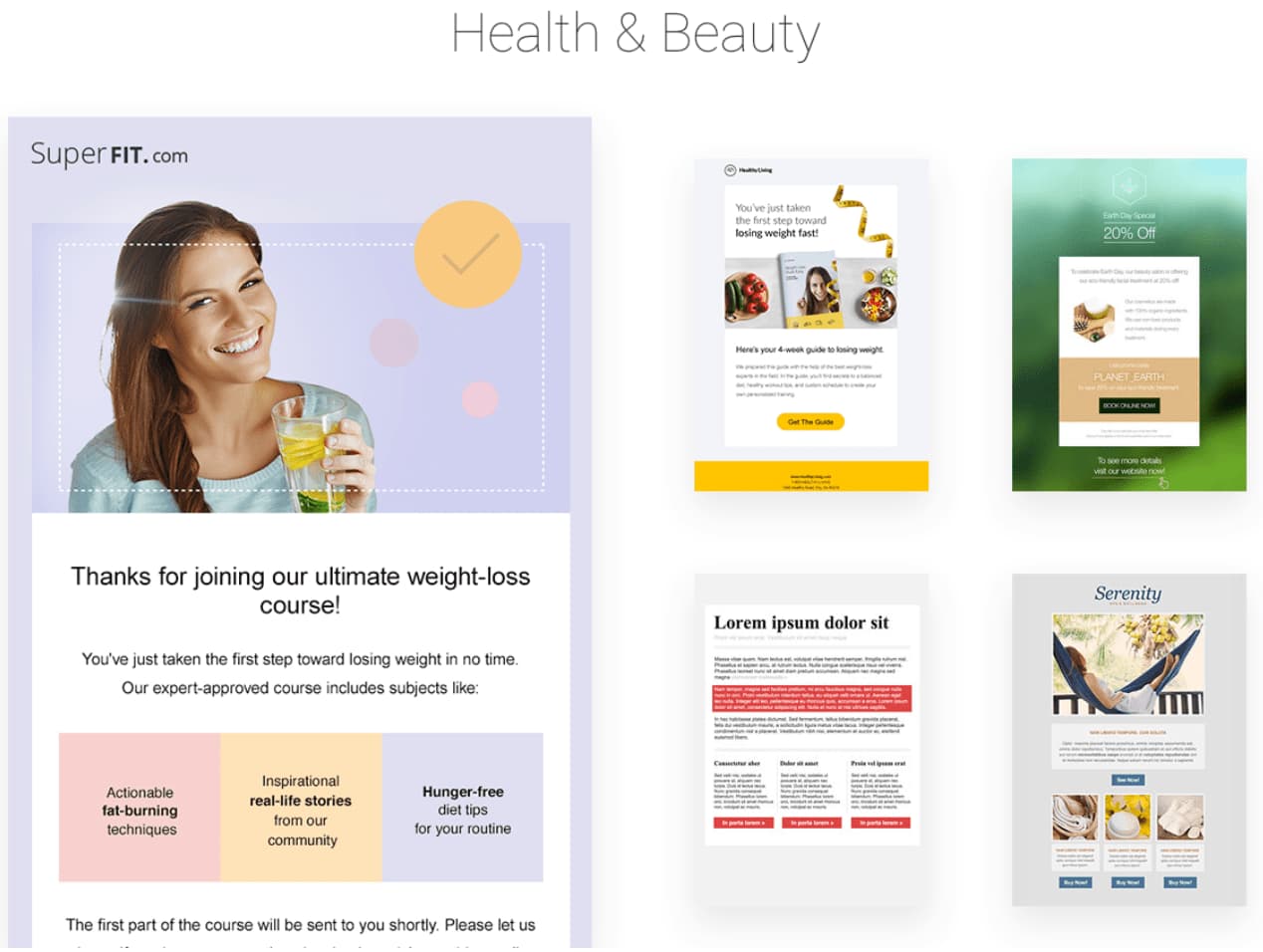
4. SendInBlue
With SendInBlue, you don’t need technical skills to create well-designed email newsletters. The drag-and-drop functionality, HTML editor, and expansive template gallery gives you the tools you need to create stunning emails.
You can personalize the design of your newsletters with easy builders, choose the form fields for your subscription form, and design many ways for your visitors to opt-in. SendInBlue has a robust automation pipeline, allowing you to send different emails based on specific actions taken by your contacts. However, SendInBlue does not have a CRM, so it’s not the best option for scaling teams.
SendInBlue lets you send 300 emails per day (6,000 emails per month) for free, and pricing starts at $25 per month for 40,000 emails.
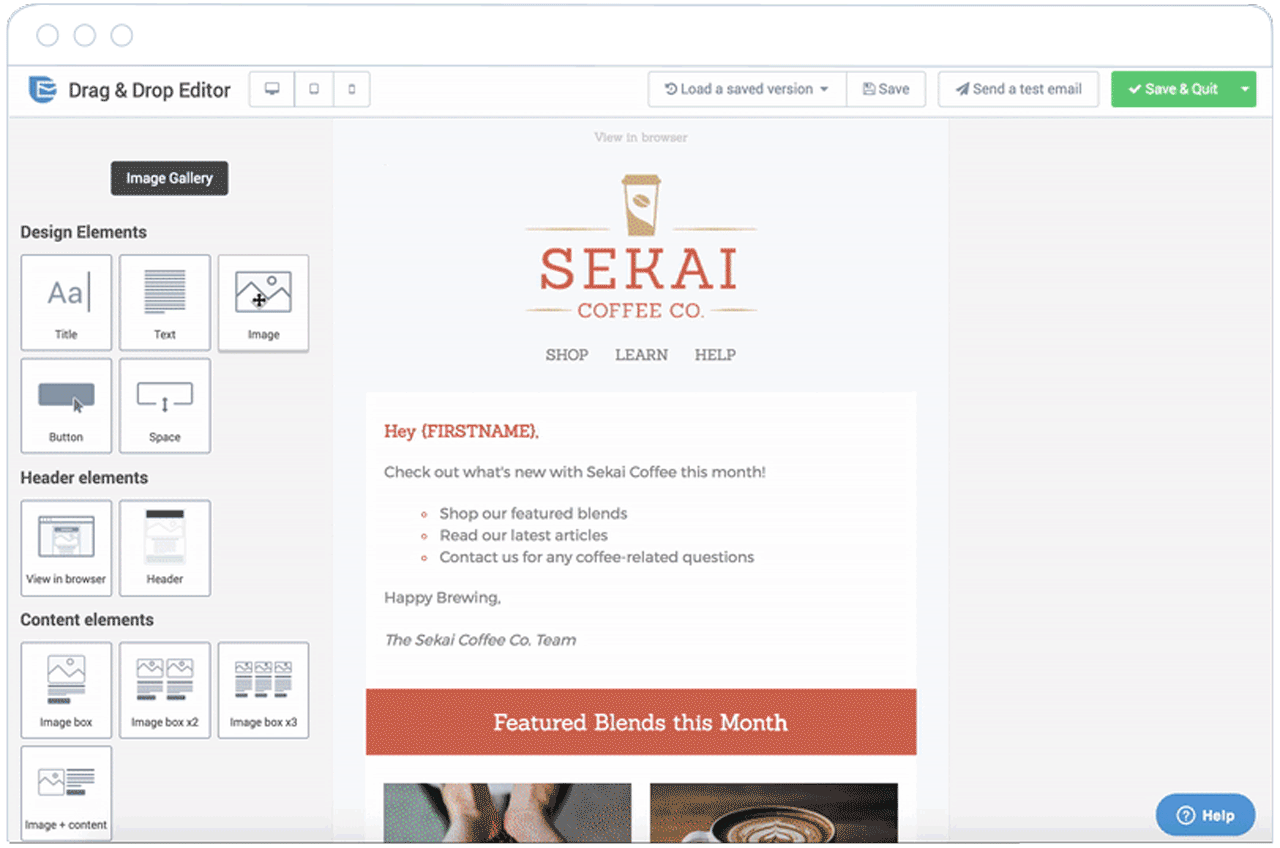
5. Mailjet
Mailjet offers email solutions for fast moving teams, especially in Europe, and great scaling opportunities for larger companies. The service is keen on being developer-friendly with a powerful API solution for engineers to build on their email platform. One appealing feature of Mailjet is the ability to create dynamic content that is personalized for each recipient based on data such as name and location.
If your team demands email newsletters be built together and reviewed often before sending, Mailjet’s collaborative tools make it easy for teams to work together on emails. For example, you can create a draft of your newsletter in Mailjet, and your teammates can suggest edits before it’s sent — all within the app.
Mailjet gives 200 emails per day (6,000 emails per month) for free, and pricing starting at $8.69 per month for 30,000 emails.
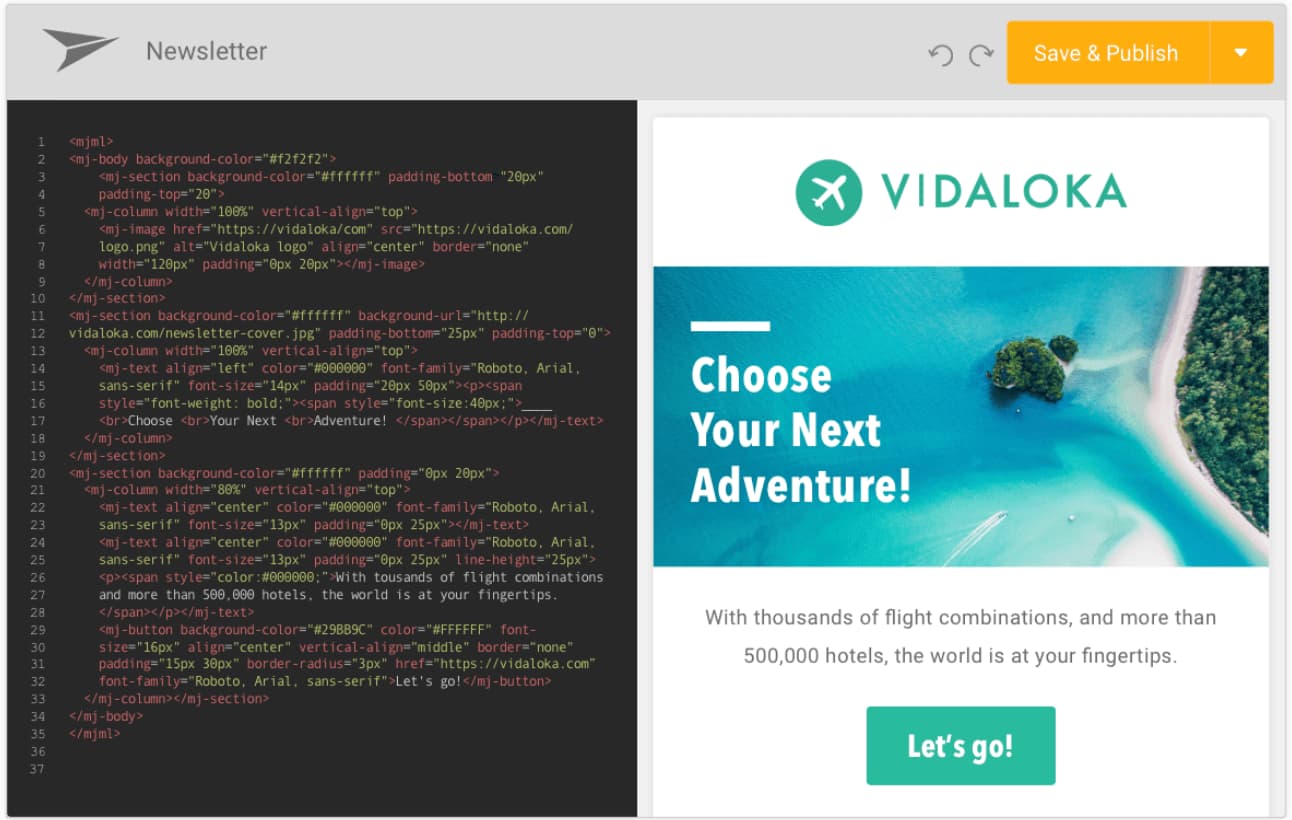
6. MailChimp
MailChimp offers a free email marketing service with a large selection of templates to choose from for newsletters. MailChimp is ideal for small and medium-sized businesses looking to get their feet wet in email marketing, but is not suited for scaling teams since it lacks powerful automation and segmenting features.
MailChimp is a valuable tool nonetheless, especially since its free plan generously offers up to 12,000 free email sends per month. You’ll also like the variety of newsletter templates that MailChimp offers, and the drag-and-drop builder that lets you rework the designs.
MailChimp offers 12,000 email sends per month to a list size up to 2,000 for free. Pricing starts at $10 per month for 500 subscribers.
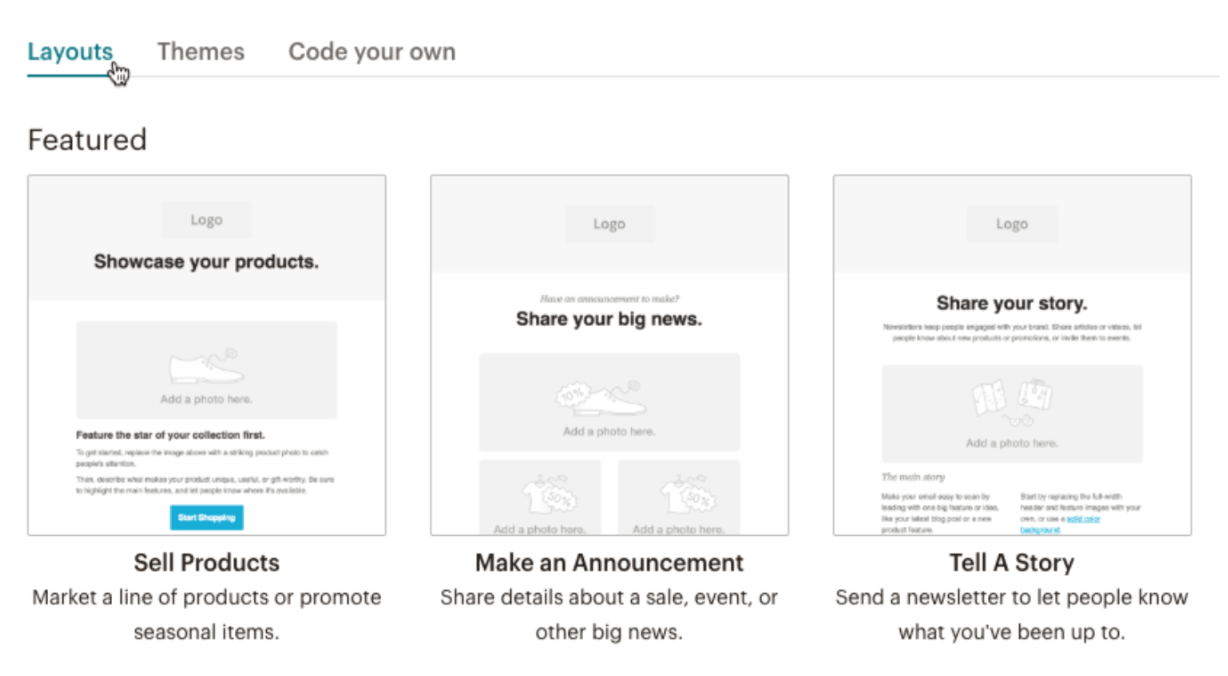
7. Constant Contact
Constant Contact provides a reliable email newsletter solution for small to large businesses. Constant Contact provides a helpful user on-boarding for anyone looking to get started quickly, and offers easy-to-use features. If you think you’ll be running into complexity with the email marketing tool, you’ll be happy to know that Constant Contact’s multi-channel support system can help walk you through most issues.
In Constant Contact, you can use their email builder to create newsletters that match your brand, select from a variety of templates, and edit to ensure it looks exactly how you want it — although I’m not a big fan of the templates, since most of the templates look outdated. Additionally, if you need sophisticated automation features and workflows, I would advise staying away from Constant Contact because it lacks a strong automation system.
Constant contact does not offer a free tier. You can try out the service for 60 days before paying, then prices start at $20 per month for a list size up to 500 contacts.
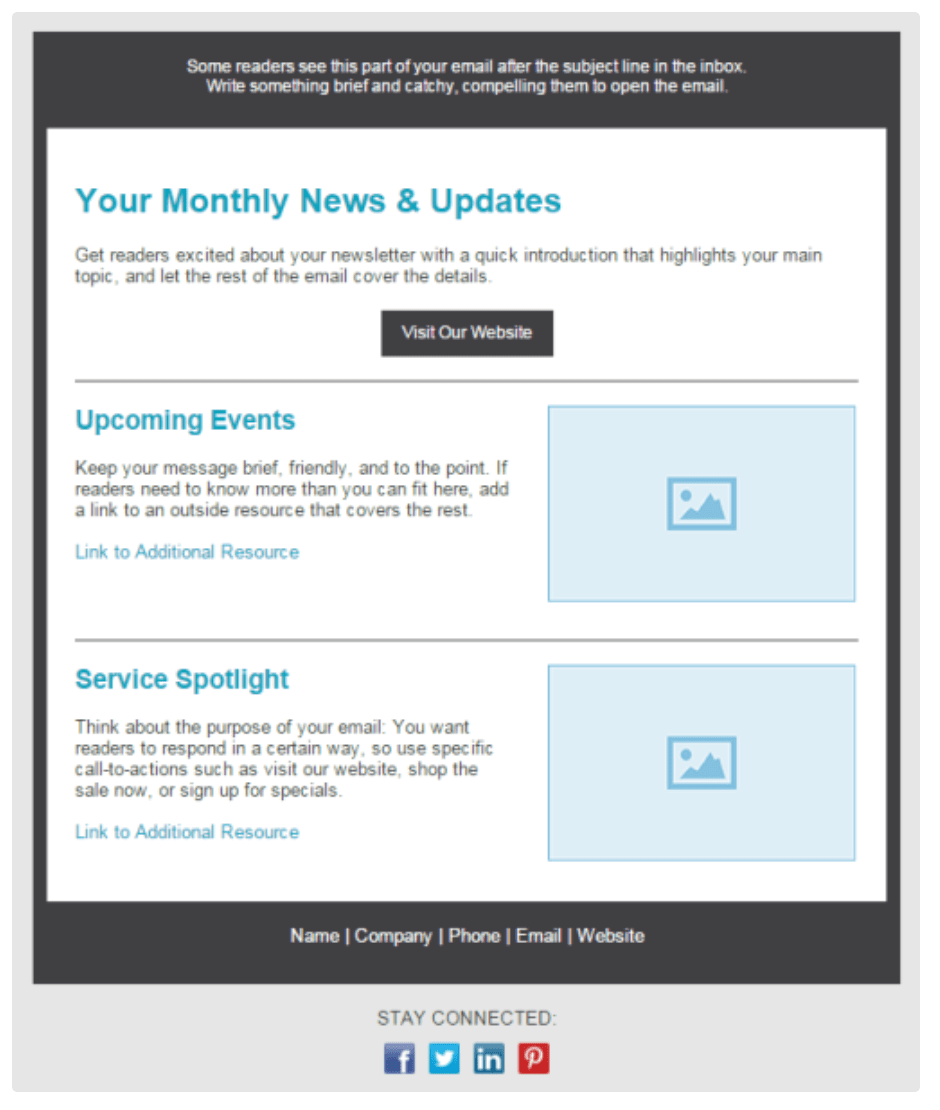
8. MailUp
MailUp offers plenty of the same functionality from what you’d expect from an email marketing service, including a drag-and-drop email builder, beautifully designed templates, and an HTML editor.
However, it’s critical to note — you get more value from MailUp if you choose to send out emails at a slower pace, since the price varies depending on delivery speed. So, if your business has a specific number of contacts and doesn’t mind sending newsletters slower, you could save money by using MailUp. If you use WordPress, MailUp also offers a WordPress plugin that you can use to capture newsletter subscribers on your website.
Like Constant Contact, MailUp does not offer a free tier option. You can try out the service for 30 days, and prices start at $49 per month.
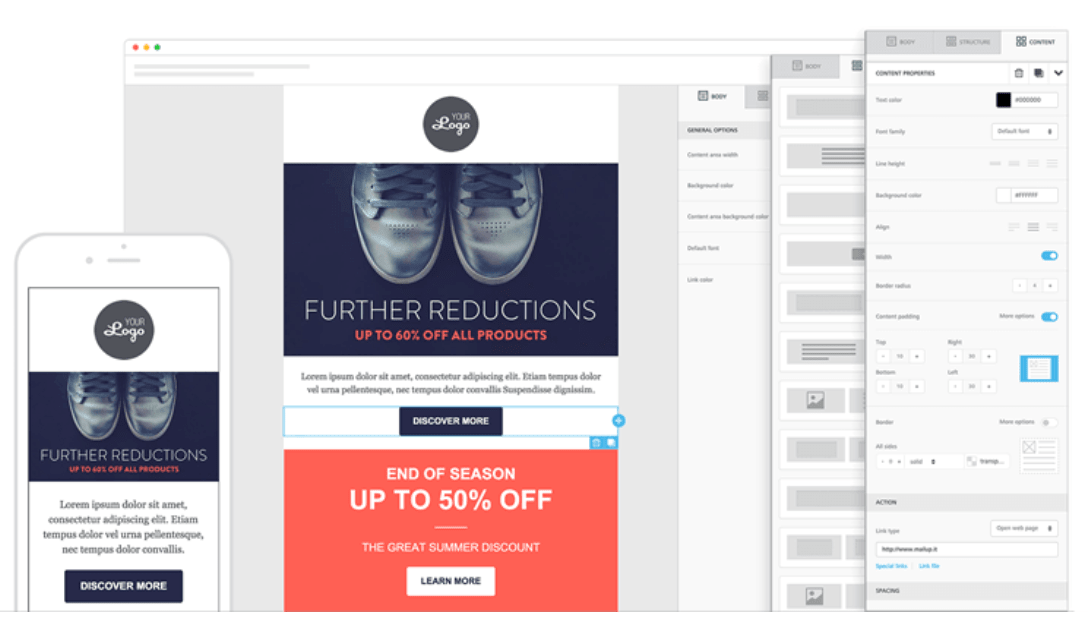
9. Zoho Campaigns
Zoho offers a great email solution for marketers looking to utilize automation features, including auto-responders and workflows. If you’re already a Zoho CRM customer, it might be worth checking out Zoho Campaigns for an email newsletter tool, since they work better together.
Zoho includes many modern and well-designed templates to choose from. If you’re worried about how your newsletter will look on different mobile devices or browsers, Zoho gives you the ability to check to see how your newsletters look on various devices to ensure your newsletter is optimized for mobile, tablet, and desktop.
Zoho offers 12,000 emails per month for free for up to 2,000 subscribers. Then there’s pricing based on plans, or pay-as-you-go credits.
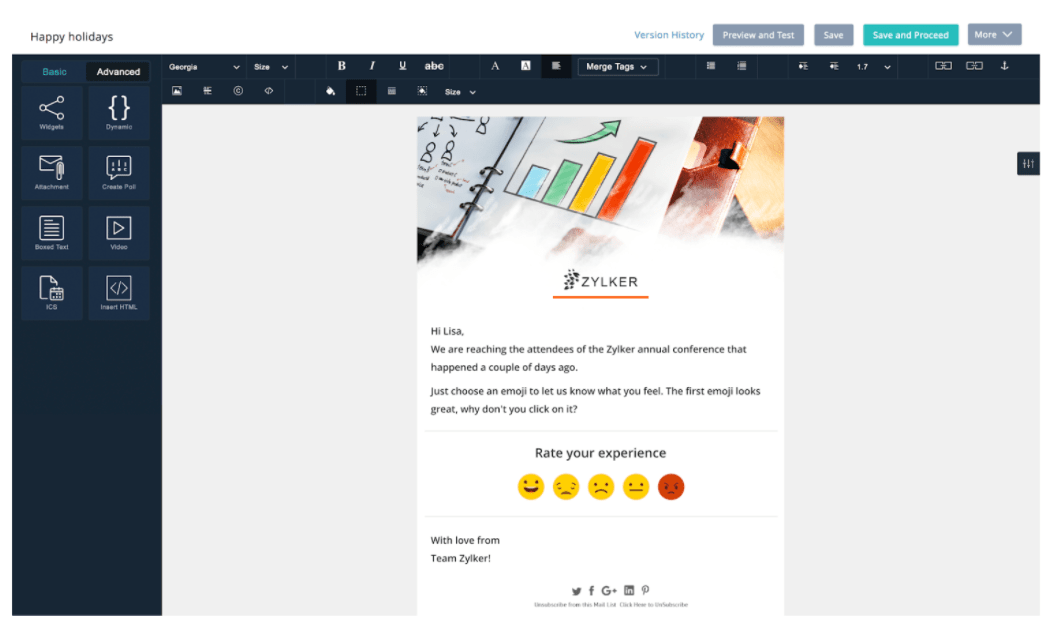
10. AWeber
AWeber delivers a well-established email marketing newsletter tool with an array of features for your business, including email designs, list segmentation, automation tools, and detailed reporting. To make design easier, AWeber has more than 6,000 royalty-free stock photos to include in your emails. Of course, you can also upload your own images and gifs.
AWeber is a great solution if your business uses WordPress, since AWeber easily integrates with WordPress. However, it’s important to note you can’t specify multiple segments at once when sending an email newsletter — plus, AWeber lacks some powerful automation features.
AWeber does not have a free version. However, you can try it out for 30 days. If you want to upgrade, prices start at $19 per month for 500 subscribers and unlimited email sends.
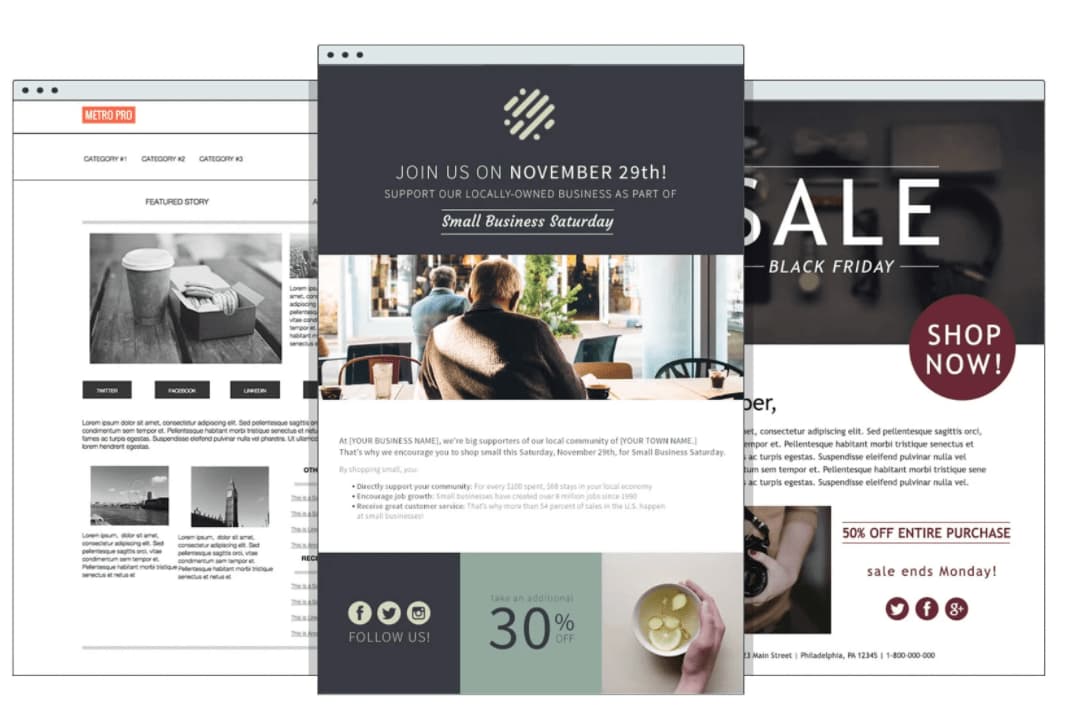
11. Campaigner
Campaigner is a good option if you work for a growing team, since the tool offers robust automation and workflow features available at the enterprise tier. You can set up systems that send email newsletters when contacts fill out specific forms, make a purchase, or engage with a previous email.
As with most of the email newsletter tools in this list, Campaigner offers easy-to-use email builders and a large selection of templates to get you started. If you run into trouble, their support is noted as being helpful at solving technical challenges.
Campaigner offers a 30-day free trial but you’ll need to put in your credit card information. Prices starting at 19.95 per month for up to 5,000 contacts.
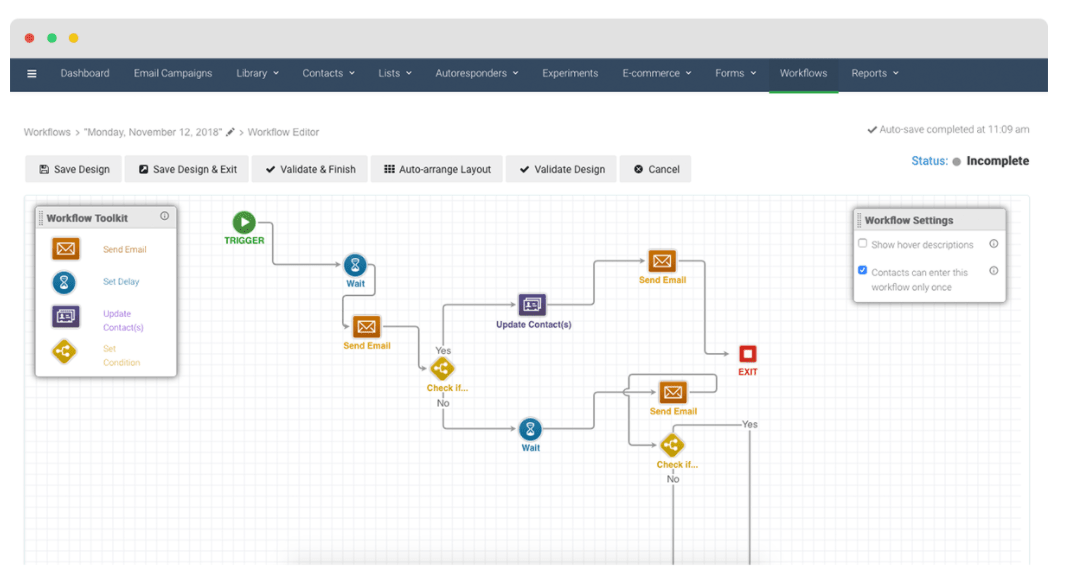
12. Drip
Drip is ideal for more experienced email marketers, since it’s not as intuitive and easy-to-use as some of the others in the list. For example, there’s a limited email template library, so you’ll have to spend time designing your email newsletter. With that said, Drip comes packed with automation features that could be beneficial for your business, particularly if you work in e-commerce.
With Drip’s “ECRM”, you can run personalized email newsletter campaigns that work with information gathered from contact purchases and checkout information, like abandoned cart details. One thing to note — Drip does not offer phone support, so you won’t have that added peace of mind.
Drip offers a 14-day free trial, with prices starting at $49 for up to 2,500 subscribers and unlimited email sends.
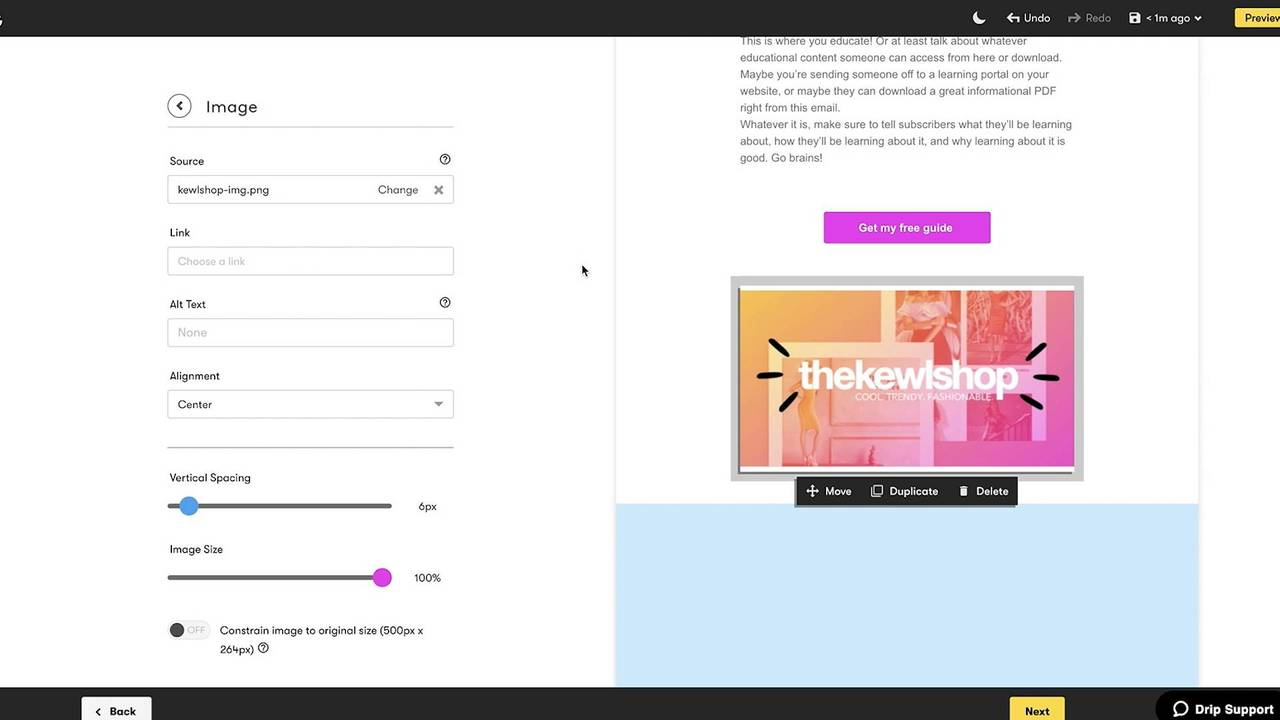
13. Postcards
Used by major brands like Nike, Disney, and T Mobile, Postcards is a drag-and-drop email builder that enables you to create impressive email newsletters. The tool features a “modular system”, meaning you can stack and re-arrange pre-made designs to create a custom newsletter that fits your brand. Customizable modules include a header and footer, CTA, and menu options.
Additionally, the tool enables you to collaborate with teammates to ensure the newsletter is up to everyone’s standards, and gives you a 30-day version history if you decide to revert to an older format. Plus, you’ll get unlimited exports.
Price: Free for one user, $15 per month for businesses, and $25 per month for agencies
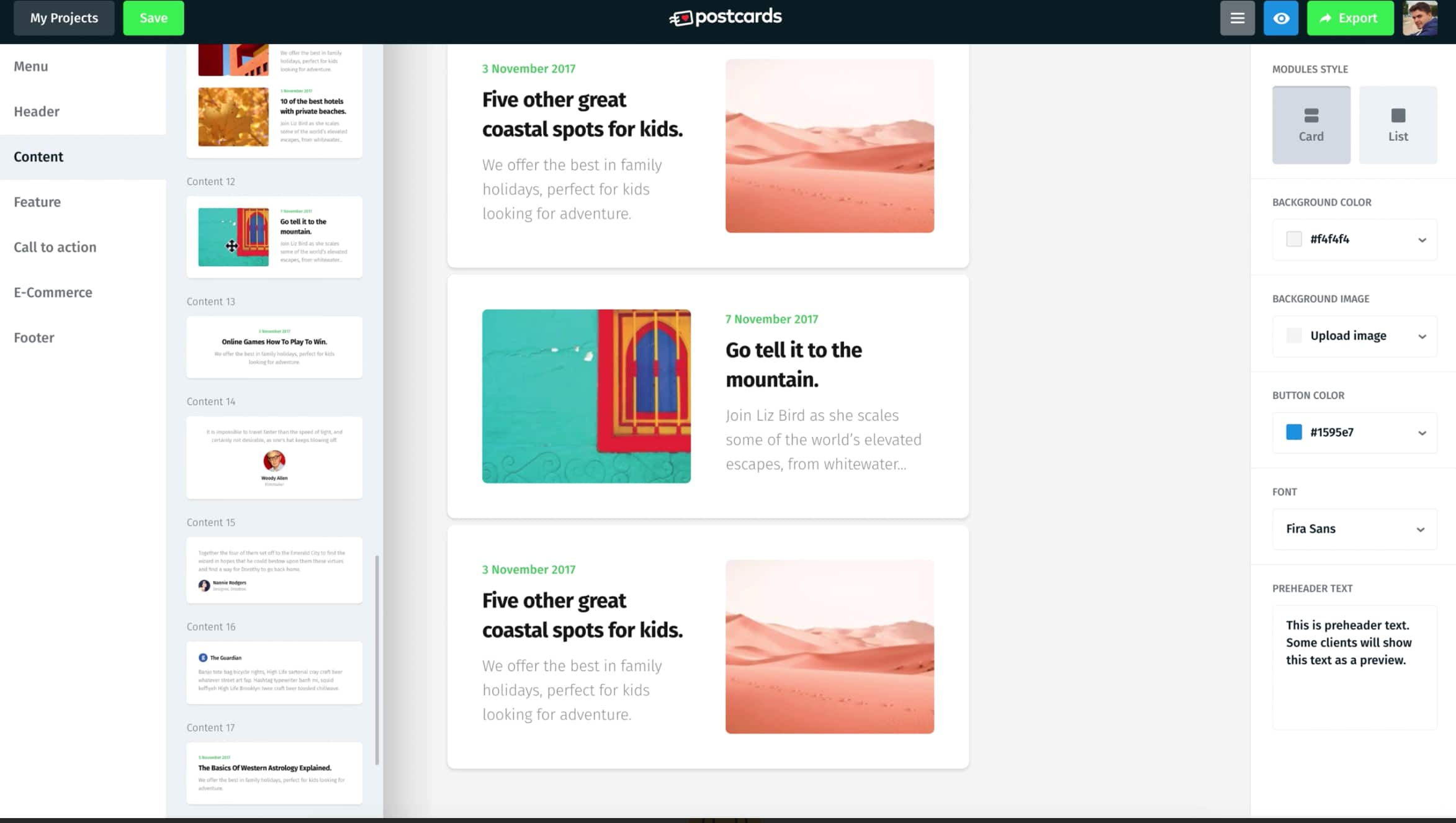
14. Campaign Monitor
Campaign Monitor’s email marketing tool enables you to create an engaging and high-quality email newsletter with a simple drag-and-drop interface. Additionally, the tool includes sign-up forms you can embed on your blog pages to encourage new readers to sign-up for daily content delivered to their inboxes.
Along with unique and customizable templates, Campaign Monitor provides a full analytics suite to help you track performance of your newsletters over time. You can measure engagement to improve the content you include in your newsletters for the long-haul.
Price: $9/month for basic, $29/month for unlimited, and $149/month for premier.
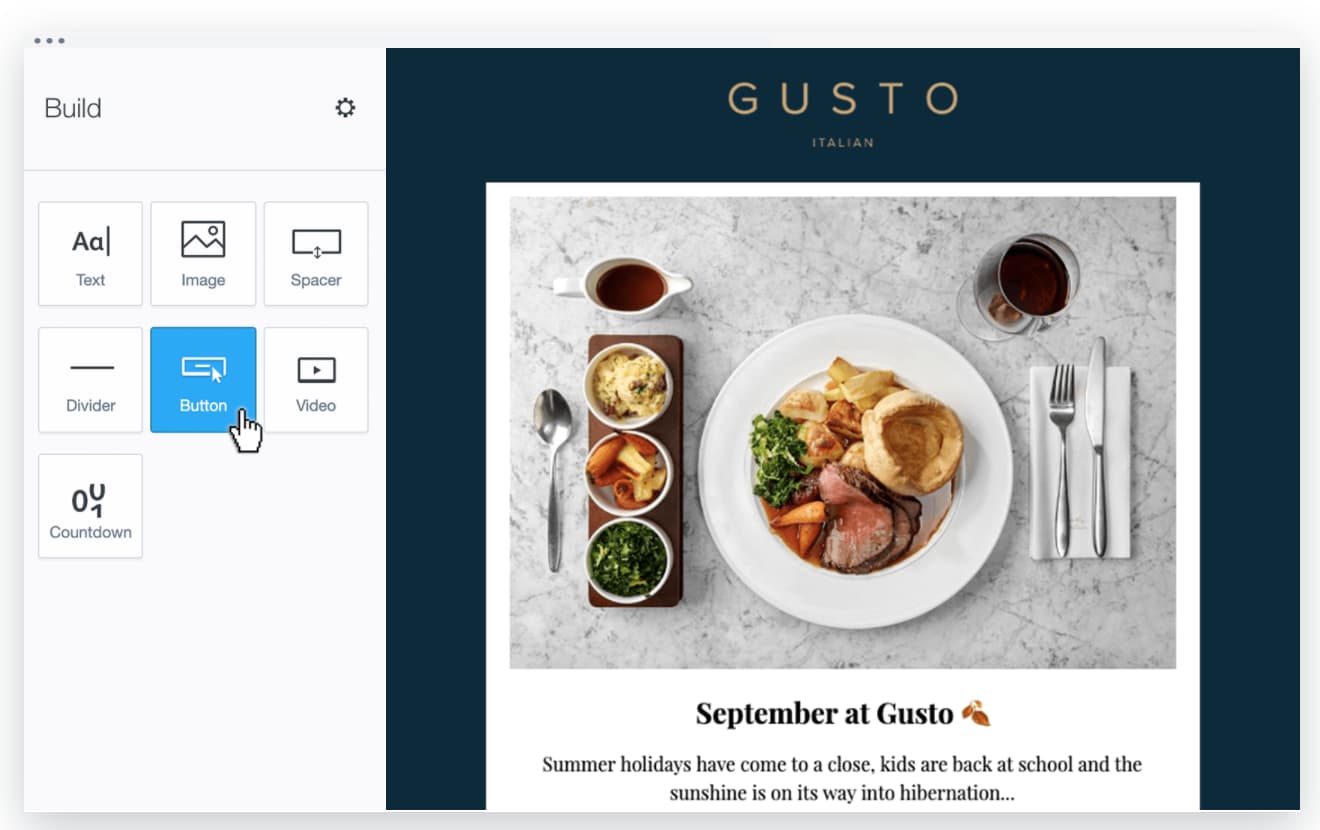
15. BEE Pro
If you’re a freelance designer or work at an email agency, this tool could be a good fit for you. BEE Pro lets you create mobile-ready emails quickly with smart design tools — plus, you can save custom templates, and even assign projects to specific clients’ to ensure an easy workflow if you’re using this one email tool for multiple brands. Additionally, the tool enables you to invite clients’ or colleagues’ to review and make comments on email newsletter drafts to get approval faster.
Price: Starting at $15/month for BEE Pro Freelance, Starting at $25/month for BEE Pro Team, and Starting at $45/month for BEE Pro Agency
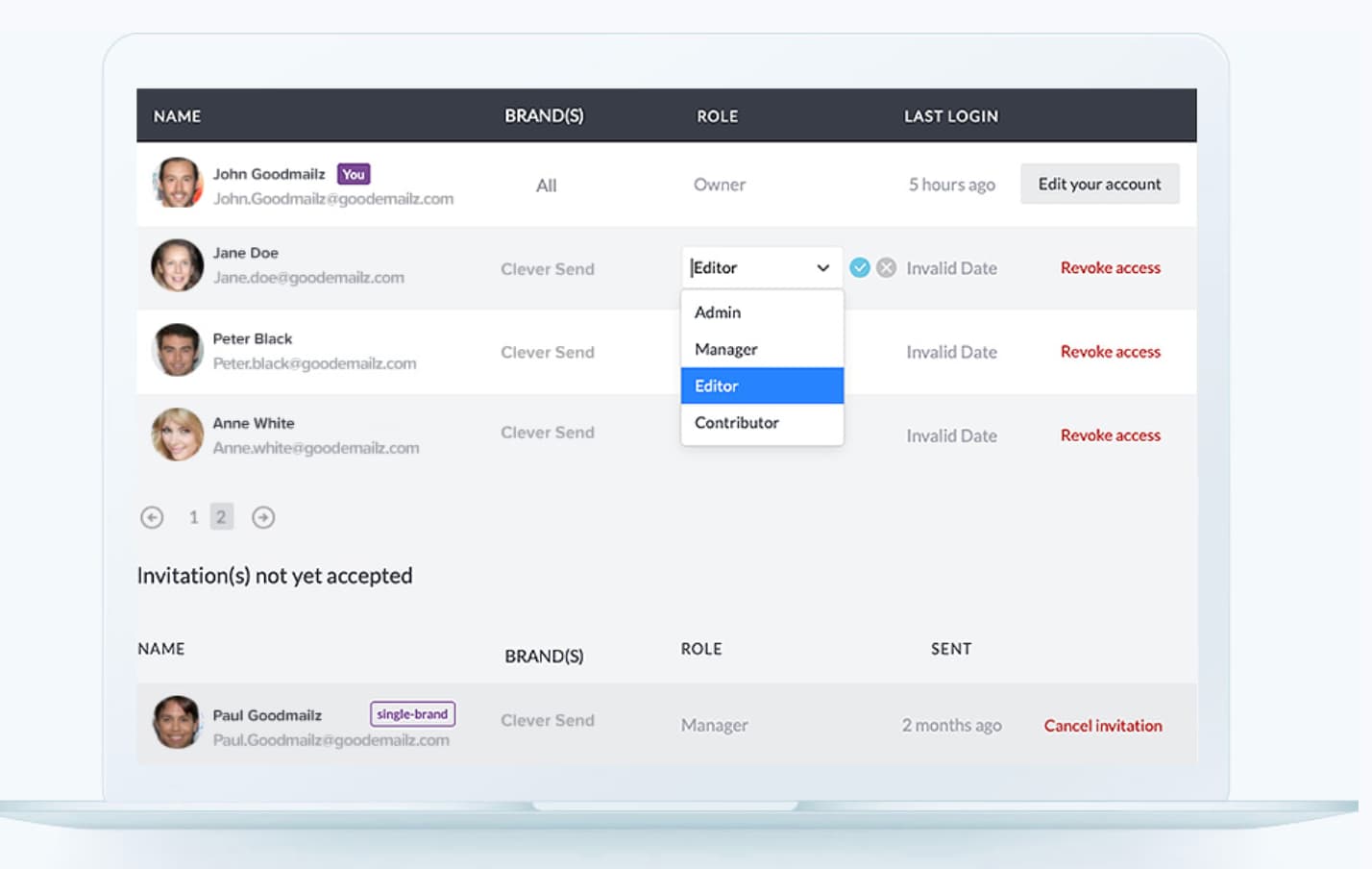
That’s it! These are the best email newsletter tools that I recommend. You can’t go wrong with any of these tools since they all offer similar features, but there will be one that’s best suited for your business. The great thing about HubSpot is that we offer a free solution to get you started — and then, once your business grows, we have plenty of advanced features you’ll need in order to deliver a successful newsletter marketing strategy down the road.
Once you’ve selected your email newsletter tool, you can begin creating your newsletter marketing strategy, which, in the most simplified version, looks like:
- Capture subscribers on your website via form submissions.
- Create email content in a newsletter design.
- Send the newsletter consistently, like once a week or bi-weekly.
If you want to learn more about how to create an email newsletter, please check out our guide.
Originally published Jun 16, 2020 6:00:00 PM, updated June 17 2020


